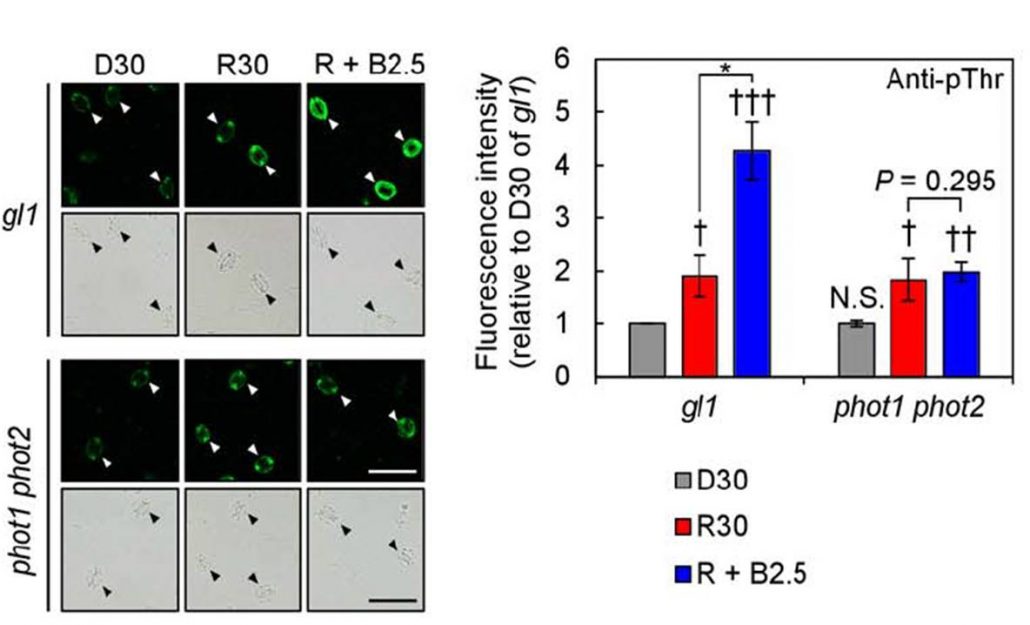
Don’t Go Grocery Shopping When Hungry! Systemic Signaling in Zinc Homeostasis
The Plant Cell, The Plant Cell: In BriefGoing grocery-shopping on an empty stomach is a bad idea. You’re bound to make poor decisions, not based on nutritional content of the food but based on temporary cravings that will leave you asking for more later. Plants face this nutritional puzzle every day, since they eat where they shop, and shop…

RNA Mobility and the Regulation of Flowering
Plant Physiology, Plant Physiology: On The InsideIn addition to hormones, proteins, and metabolites, many plants use mRNAs as mobile molecules for long-distance communication. It has been demonstrated that many mobile mRNAs are trafficked through phloem, probably by forming an RNA-protein complex to allow the stable translocation of mRNA molecules.…

Red Light and the Plasma Membrane H+-ATPase in Guard Cells
Plant Physiology, Plant Physiology: On The InsideStomatal opening is stimulated by light, including blue and red light. Blue light-induced stomatal opening is fairly well understood: it is mediated by blue-light photoreceptor phototropins (phot1 and phot2). Blue light activates the plasma membrane (PM) H+-ATPase via phosphorylation of its penultimate…

Esculin, a Sucrose Proxy for Phloem Transport
Plant Physiology, Plant Physiology: On The InsideThe study of phloem transport and its vital roles in long distance communication and carbon allocation have been hampered by a lack of suitable tools that allow high-throughput, real-time studies. Since the 1970s, several studies have used 11C or 14C isotopes to measure rates of phloem transport in large…

Annexins Facilitate Post-Phloem Sugar Transport
Blog, Plant Physiology, Plant Physiology: On The InsideBecause local sugar concentrations play a critical role in regulating root growth, it is important to learn more about the mechanisms that control sugar transport into the growing zones of the
root. It has previously been proposed that once translocated sugar reaches the interface between conducting…

Co-expression networks for strawberry flower and fruit development
Plant Science Research WeeklyThe diploid strawberry (Fragaria vesca) is a useful model system for understanding non-climacteric ripening and seed-to-fruit cross-tissues communication. Previously, spatial and temporal transcriptome data from the strawberry fruit and flowers was generated. Shahan and colleagues combine the transcriptome…

How to identify the substrates of ATP-binding cassette (ABC) transporters (Plant Physiol)
Plant Science Research WeeklyPlant genomes encode many ATP-binding cassette (ABC) transporters, which mediate the transport of many different substrates involved in development, nutrition and stress responses. Mutants and transgenic plants have been used to understand the in planta roles, yet the identity of substrates transported…

Adjusting Boron Transport by Two-Step Tuning of Levels of the Efflux Transporter BOR1
Plant Physiology, Plant Physiology: News and ViewsBoron is an essential plant micronutrient with the narrowest optimal range in the soil of any micronutrient. At neutral pH, boron is present as uncharged boric acid, B(OH)3, which can freely penetrate membranes. Boron plays an important role in cross-linking cell wall components, but boron starvation…

Developing High-Yield Early-Maturation Crops by Manipulating Nitrogen Utilization
Research, The Plant Cell, The Plant Cell: In a NutshellWang et al. investigate the function of OsNRT1.1A in rice. Plant Cell (2018). https://doi.org/10.1105/tpc.17.00809.
By Wei Wang, Bin Hu and Chengcai Chu
Background: To cope with an increasing global population and decreasing availability of arable land, improving crop yield is a major agricultural…

